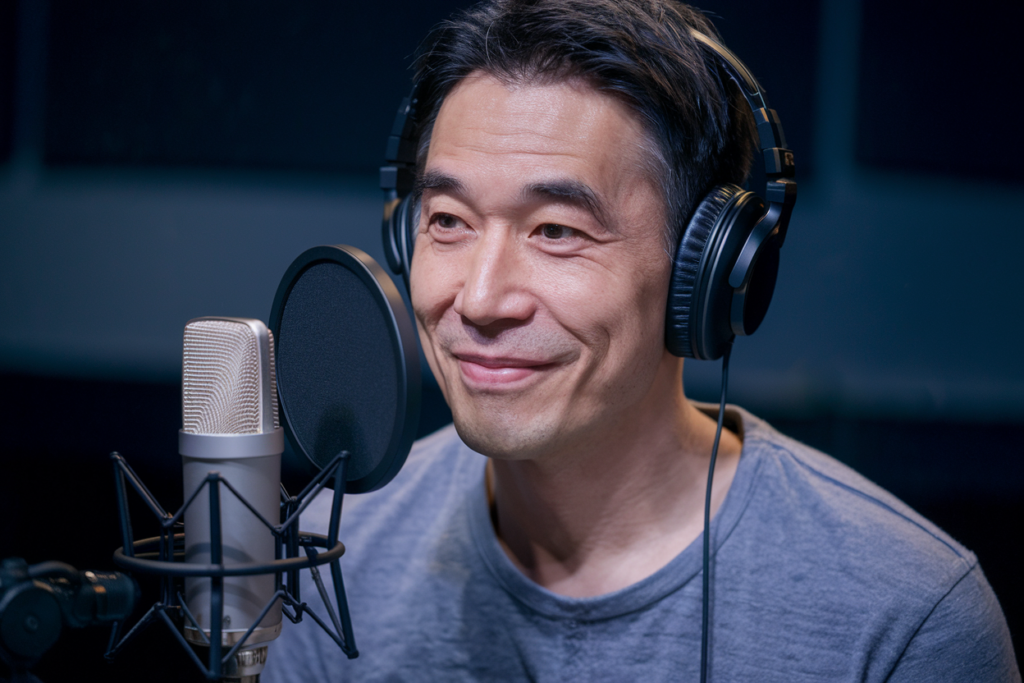Key Takeaways
- Native Speaker Count: Approximately 125 million people speak Japanese as their first language in Japan, with an estimated 1-2 million native speakers living abroad.
- Cultural Insights: Understanding the number of native speakers provides valuable insights into Japanese culture, aiding effective communication and cultural exchange.
- Demographic Trends: Accurate counts influence educational programs and business strategies, allowing for better resource allocation and tailored marketing approaches.
- Global Distribution: Major communities of native Japanese speakers exist outside Japan in cities like Los Angeles and New York City, presenting unique engagement opportunities.
- Influencing Factors: Declining birth rates and immigration patterns significantly affect the count of native speakers, impacting cultural preservation efforts.
- Economic Implications: The presence of native Japanese speakers is crucial for businesses aiming to penetrate Japanese markets or engage with Japanese communities globally.
Ever wondered just how many native Japanese speakers there are in the world? You’re not alone. Understanding the count of native Japanese speakers is crucial for anyone interested in language trends, cultural insights, or even business opportunities in Japan.
With a rich history and unique linguistic characteristics, Japanese is more than just a means of communication—it’s a gateway into an entire culture. Whether you’re planning to travel, study, or expand your business into Japan, knowing the number of native speakers can help you gauge its global influence. Let’s dive into this fascinating topic and uncover what the numbers reveal about one of the most intriguing languages on the planet.
Overview of Native Japanese Speakers Count
Understanding the count of native Japanese speakers provides valuable insights into cultural dynamics and language trends. This information is crucial for various sectors, including business, education, and travel.
Definition of Native Speakers
Native speakers refer to individuals who speak a language from early childhood as their first language. In the case of Japanese, this group includes those born in Japan or raised within Japanese-speaking environments. Their fluency in nuances, idioms, and cultural references enhances communication effectiveness.
Importance of Accurate Counts
Accurate counts of native Japanese speakers matter significantly for several reasons. First, these figures impact educational programs targeting language learning; knowing how many native speakers exist influences resource allocation and teaching strategies. Second, businesses looking to engage with the Japanese market benefit from understanding demographic trends related to native speakers.
Here’s a quick look at global statistics regarding native Japanese speakers:
| Region | Estimated Number of Native Speakers |
|---|---|
| Japan | 125 million |
| Outside Japan | 1-2 million |
These numbers highlight not just the presence but also potential opportunities for interaction with native speakers globally. By grasping this data, you can navigate cultural exchanges more effectively and tailor your approach when communicating or conducting business in Japan.
Global Distribution of Native Japanese Speakers
Understanding the global distribution of native Japanese speakers provides valuable insights for businesses and individuals engaging with Japan. The majority of native speakers reside in Japan, but significant communities exist elsewhere.
Trends in Japan
In Japan, approximately 125 million people speak Japanese as their first language. This figure highlights the language’s dominance within the country. Urban areas like Tokyo and Osaka showcase a high concentration of native speakers, facilitating cultural exchange and communication. Language trends also reflect increasing interest in dialects; regional variations enrich conversations and cultural expressions throughout the nation.
Japanese Communities Abroad
Outside Japan, an estimated 1-2 million native Japanese speakers contribute to vibrant communities worldwide. Major cities such as Los Angeles, New York City, and São Paulo host these populations. These communities maintain strong ties to their culture through festivals, cuisine, and media consumption. Engaging with these groups presents unique business opportunities that demand tailored communication strategies that resonate with their cultural background.
Understanding where these native speakers are located can significantly enhance your approach when connecting with them in various contexts—be it education, travel, or commerce.
Factors Influencing the Native Japanese Speakers Count
Understanding the factors influencing the count of native Japanese speakers provides insights into language dynamics and cultural preservation. Several key elements play a role in shaping these numbers.
Birth Rates and Language Maintenance
Birth rates significantly affect the number of native speakers. Japan has experienced declining birth rates over recent decades, leading to fewer children growing up as native speakers. This demographic shift impacts local communities and schools, where educational programs may adapt to changing populations. Maintaining fluency in Japanese among younger generations relies on active engagement with cultural practices, family interactions, and consistent exposure to the language through media and education.
Immigration Patterns
Immigration patterns also influence the population of native Japanese speakers. While many individuals migrate from Japan for work or study abroad, they often maintain their linguistic heritage within their families and communities. Immigrants contribute to a diverse landscape of language use in regions like Los Angeles or New York City. The establishment of cultural organizations helps sustain connections to Japan and fosters environments where Japanese is spoken, ensuring that future generations can inherit this vital aspect of their identity.
By examining these factors, you can gain a deeper understanding of how the number of native Japanese speakers evolves over time and what it means for cultural exchange opportunities globally.
Implications of Native Japanese Speakers Count
Understanding the count of native Japanese speakers holds significant implications for various sectors, including culture and economy.
Cultural Preservation
Cultural preservation hinges on the number of native speakers. With approximately 125 million native speakers in Japan, their language is a vessel for cultural heritage. Language shapes identity; as you engage with Japan, recognizing this connection enhances your appreciation of its art, traditions, and societal norms. By supporting initiatives that promote the use of Japanese among younger generations, you help maintain these cultural ties. Engaging with native speakers also facilitates authentic exchanges that enrich both personal experiences and broader intercultural dialogue.
Economic Impact
Economic impact correlates directly with the presence of native Japanese speakers. In business contexts, understanding the language nuances can lead to successful negotiations and partnerships. Companies targeting markets with native Japanese populations tap into consumer behaviors shaped by cultural context. With an estimated 1-2 million native Japanese speakers living abroad—particularly in urban centers like Los Angeles or New York City—businesses can leverage these communities for tailored marketing strategies. A solid grasp of local dialects and customs fosters trust and rapport between brands and consumers.
By acknowledging these implications—cultural preservation and economic impact—you enhance your engagement strategies in education, travel, or commerce related to Japan’s rich linguistic landscape.
Conclusion
Understanding the count of native Japanese speakers is essential for anyone looking to engage with Japan on various levels. This knowledge opens doors to cultural enrichment and successful business ventures.
As you navigate opportunities in language learning or international commerce, keep in mind the rich tapestry of communities both within Japan and abroad. The unique characteristics of these speaker populations can enhance your strategies whether you’re a traveler seeking authentic experiences or a professional aiming for effective communication.
Embracing the nuances of the Japanese language and its speakers will not only deepen your appreciation but also strengthen connections across cultures.
Frequently Asked Questions
How many native Japanese speakers are there worldwide?
The estimated number of native Japanese speakers is around 125 million in Japan and 1-2 million living abroad. Understanding these figures is essential for businesses, educators, and travelers interested in engaging with the Japanese-speaking community.
Why is knowing about native Japanese speakers important?
Knowing about native Japanese speakers helps individuals navigate cultural insights, language trends, and business opportunities. It enhances communication effectiveness and fosters better relationships in educational, travel, and commercial contexts.
What defines a native Japanese speaker?
A native Japanese speaker is someone who has spoken the language from early childhood. This includes those born in Japan or raised in environments where Japanese is predominantly used.
Where do most native Japanese speakers live?
Most native Japanese speakers reside in Japan, particularly in urban areas like Tokyo and Osaka. Significant communities also exist outside Japan, especially in cities such as Los Angeles, New York City, and São Paulo.
How do declining birth rates affect the number of native speakers?
Japan’s declining birth rates result in fewer children growing up as native speakers. This trend impacts local communities and educational programs by reducing the number of individuals fluent in the language over time.
What role does immigration play in the count of native speakers?
Immigration contributes to maintaining a diverse population of native speakers outside Japan. Many immigrants preserve their linguistic heritage by continuing to speak Japanese within their communities, fostering cultural ties abroad.
How can understanding these counts benefit businesses?
Businesses that understand the demographics of native Japanese speakers can tailor their strategies for effective communication and engagement. This knowledge aids successful negotiations and partnerships within markets that include these populations.
Why should we care about cultural preservation related to language?
Cultural preservation through language helps maintain identity and appreciation for traditions. Supporting initiatives that encourage younger generations to use Japanese ensures that cultural heritage continues to thrive across generations.







